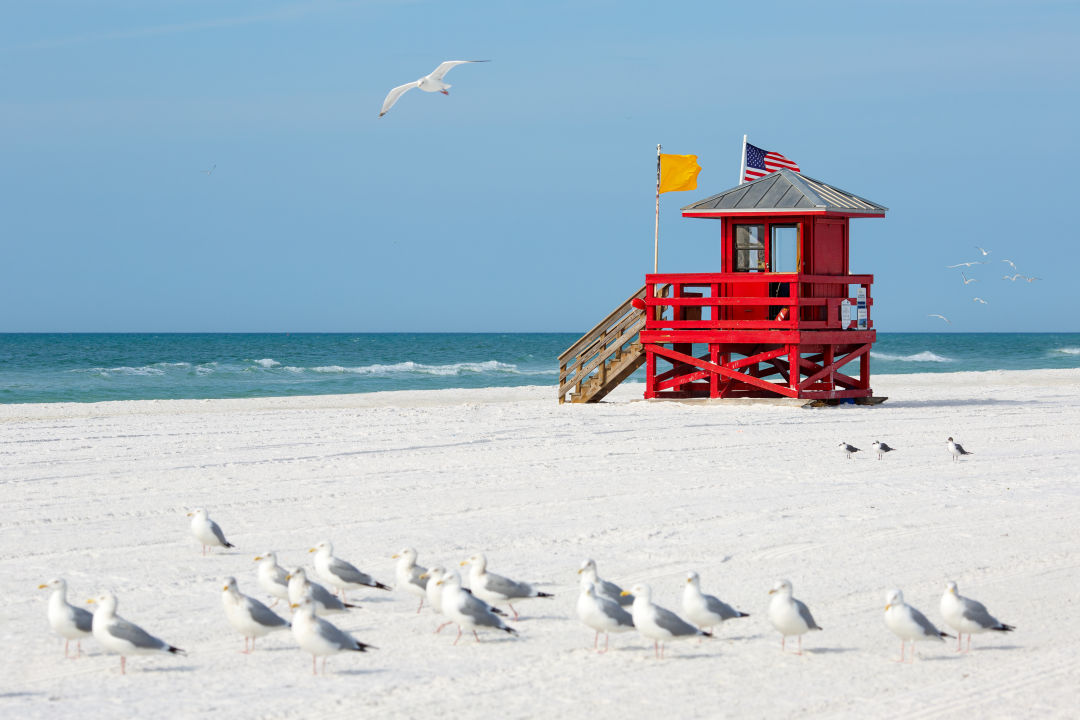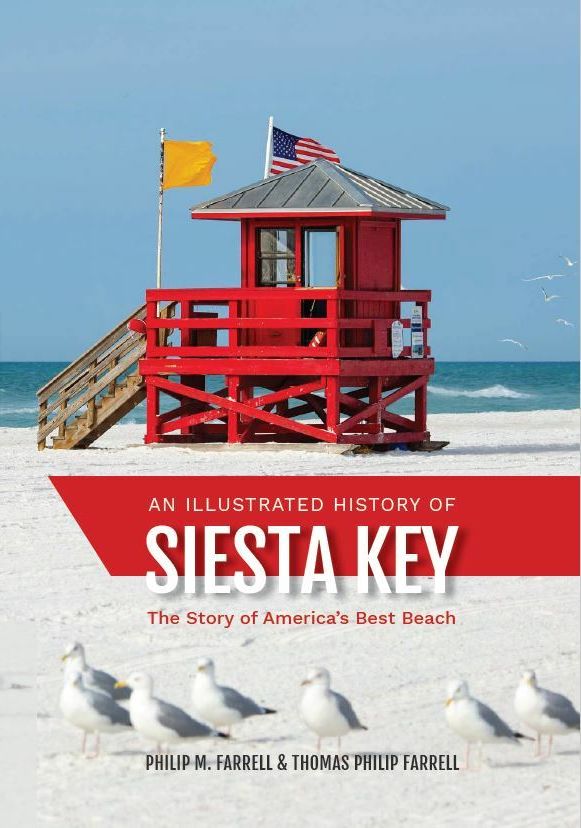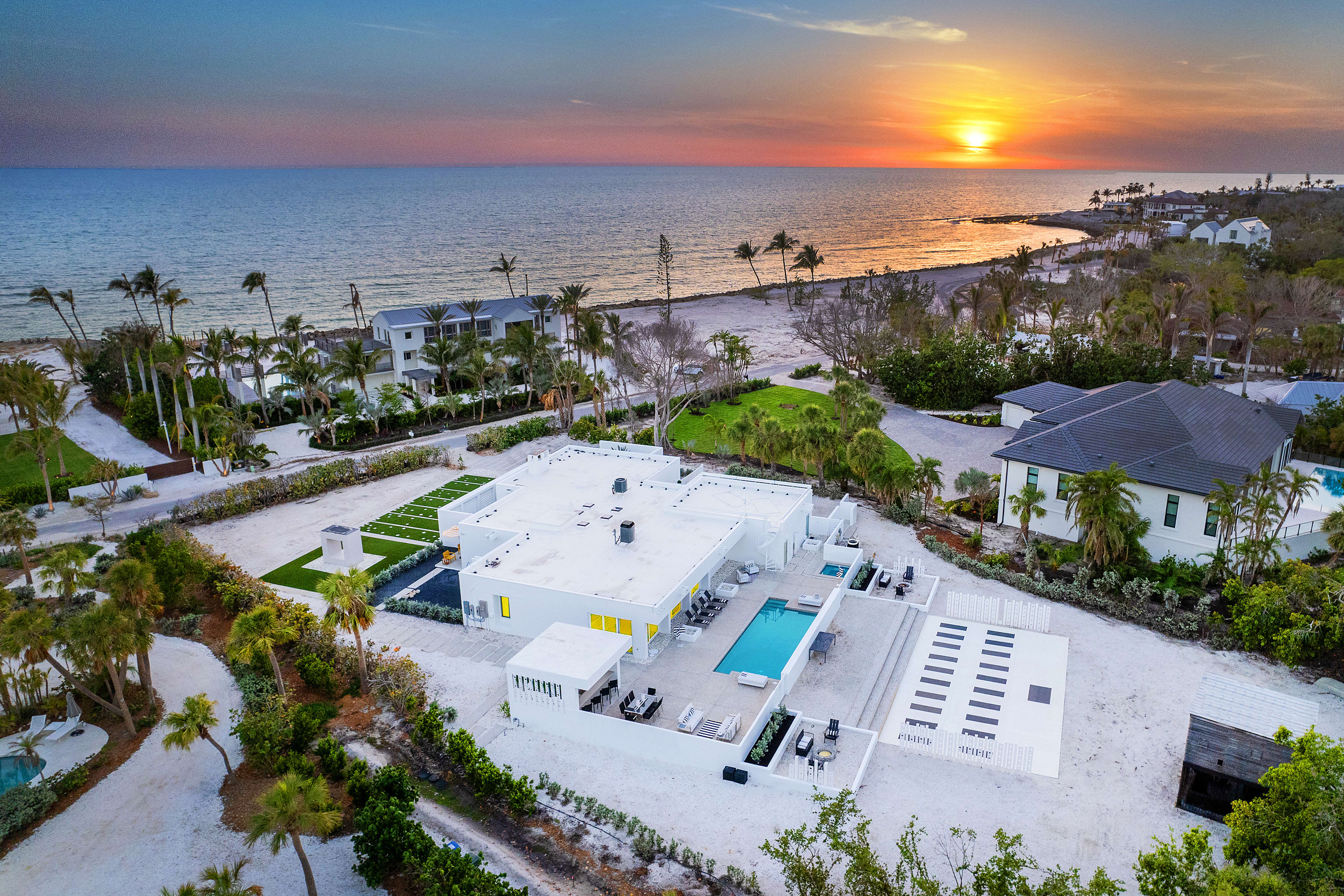A New Book Celebrates the History of Siesta Key

Siesta Key Beach
Image: Shutterstock

His specialty is pediatric cystic fibrosis, which has little to do with the beach—but that’s also what led the author of An Illustrated History of Siesta Key: The Story of America's Best Beach, to it. Dr. Philip Farrell discovered Siesta Key when he and his wife attended a conference in Sarasota in 2005. During their stay, they visited every beach in the county and—like so many of us—Siesta Key won their hearts. Now they stay there every winter, breaking up their time in Three Lakes, Wisconsin.
Farrell co-authored the book with his grandson, Thomas, who also visits Siesta Key regularly. As they both learned more about it, they uncovered a story that begins nearly 700 million years ago and aim to bring to life the people and events that helped it become what it is today.
Farrell says he largely wrote his history of the key at the beach, and designed it to be a good seaside read by adding lots of eye candy. In fact, it has more than 150 images, from 18th-century maps to old postcards found on eBay with notes that say things like, “Dear Aunt Kate, we’re enjoying the beach.”
The book also covers architectural styles of the region in response to changes in the tourism industry. We caught up with Farrell at the 2021 American Institute of Architects (AIA) Florida Gulf Coast Chapter annual meeting and dinner, where he spoke to the crowd remotely, to learn more about Siesta Key and the architectural gifts that still stand today.
What are some of the names and places that are architecturally significant on Siesta Key?
You've seen the Seibert Pavilion there, designed in 1960. Hundreds of people pass through there every day, but how many people know the significance of it? It’s an embodiment of the Sarasota School of Architecture.
Then there's Paul Rudolph, who designed the Sanderling Club, the Revere Quality House and the Cocoon House. Mary Hook bought 55 acres of Siesta Key and is responsible for designing the Whispering Sands Inn in 1935. In 1945, she created Sandy Hook, an incubator for innovative architects. Also important is Carl Abbott’s work. He designed Casa del Cielo in the early 1980s.
In the '50s, Siesta was beach cottage resorts made of cypress wood milled nearby. Then, when Disney opened in 1971, it created a boom and cottages turned to condos. During the '70s, Siesta land was too valuable to waste on spread-out, often one-story cottages, and high-rises took over through the '80s and '90s. Finally, as height restrictions came into play in the early 2000s, developers saw opportunities to make as much money with fewer, more expensive condos, giving rise to luxury condos.
What do you wish everyone knew about Siesta Key?
The history. That's the main mission I had with the book: to educate people. I think people would appreciate the history more if they knew about it. How many people boating on Roberts Bay know about Captain Lewis Roberts? He fished Sarasota Bay annually after 1870, married in 1881 and settled on homesteaded land, known today as Roberts Point.
Roberts partnered with Harry Higel to form the Siesta Land Company and established a casino and dance hall in the 1920s at Ocean Boulevard and Beach Road.
Harry Higel was the mayor from 1911 to 1917 and incorporated the town into a city and gave the key its name. He acquired 160 acres of Siesta Key property through marriage. In 1915, he built the Higelhurst Hotel, accessible only by water, which burned down after only two years. He also built the North Bridge, once named after him, that launched tourism on Siesta Key in 1917.
In 1921 he was bludgeoned to death while strolling on Beach Road. His alleged murderer was never punished for the crime, and the poor handling of the murder is said to have played a role in separating Manatee and Sarasota counties when Sarasota residents were unhappy with the investigation.
What are some of the biggest threats to Siesta Key?
In the short term, it’s traffic density, overcrowded beaches, dredging Big Sarasota Pass, and overpopulation with an infrastructure that isn't adequate to support it. Rising insurance costs, too.
In the long term, it’s rising temperatures and water levels with overheated oceans due to climate change. There’s increased risk of tropical storms and more red tide. Rising sea levels erode the shoreline and can lead to salt water penetrating coastal groundwater sources, increasing the salinity of freshwater.
Unless something happens to slow that rate of global warming, there's no question that it will be very detrimental to all coastal regions, but particularly Florida.
What do you think of the hotels that may soon be built there?
I won’t speak to that directly, but history shows that these kinds of things get built. Siesta Key transformed from a long-term rental population in the ‘60s to a more short-term type of visitor. Some condos are turning over guests as frequently as hotels are.
Does Siesta Key offer healing properties—like protection from hurricanes due to Native American blessings, or the energy from the quartz sand? Is there any truth to the myths?
As for healing properties, yes, the physical and mental well-being of being on the beach is relaxing for the mind, and it’s good to go walking on the beach. Then there’s the bibliotherapy. You see lots of people reading there.
As for the myths, no—but the myths are precious too. When people believe misinformation, it can be harmful. But it's nice to just enjoy the myths without necessarily believing them.
An Illustrated History of Siesta Key: The Story of America's Best Beach is available locally at Davidson Drugs stores, Captain Curt's Crab & Oyster Bar gift shop, Crescent Beach Grocery and Sarasota County libraries.



